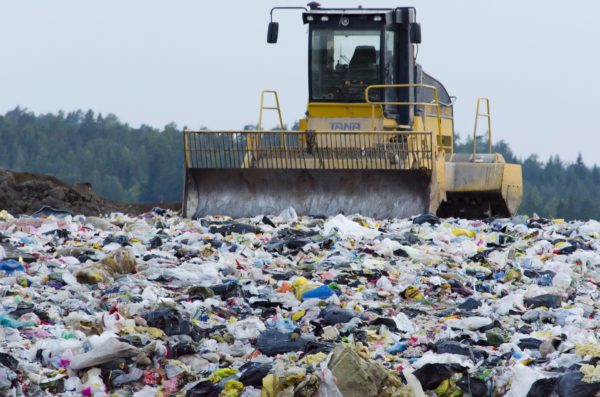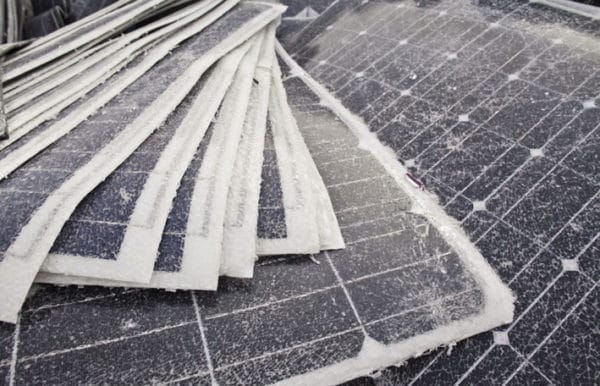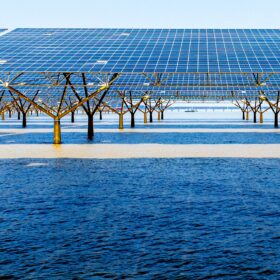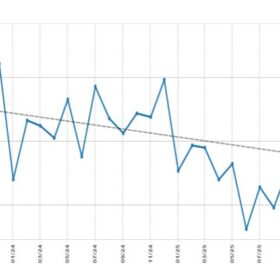Environment Minister Sussan Ley has directed solar PV module manufacturers to produce a “clear timeline” for establishing an industry wide recycling strategy for end-of-life technology with the government determined to avoid a looming “landfill nightmare”.
Speaking at the National Press Club this week, Ley said government is concerned that Australia’s record rollout of solar PV will eventually generate a huge pipeline of waste and a solution is needed now.
“I am putting the solar panel industry on notice with clear timelines for action,” she said.
“The uptake of millions of solar panels across the country from rooftops to solar farms has been vital from an emissions perspective but the explosion of retailers and importers in the area, and the lack of an industry wide approach to collection and recycling, means that it also looms as a landfill nightmare.
“We can’t fix one environmental issue by creating another.”
Australia has embraced solar PV, with 2 GW of new large-scale solar generation capacity added to the grid in 2020 while a record 3 GW of rooftop solar PV capacity was installed nationally last year.
All indications are for another bumper year in 2021 with the Clean Energy Council predicting another 3.5 to 4 GW of rooftop capacity will be installed while large-scale solar also continues at pace.
The lifespan of a solar module can be anywhere from 10 to 25 years, and while some industry figures have calculated that average solar module in Australia is three-years old, the number of panels nearing the end of life is about to grow exponentially.

Image: Prylarer/Pixabay
Currently, almost all broken or expired solar panels in Australia go into landfill and researchers from the University of South Australia (UniSA) have estimated that more than 100,000 tonnes of solar modules will enter the waste stream by 2035
The government has been pushing the industry to develop a plan for the past six years, and Ley is expected to next week list solar modules on the government’s stewardship priority list – which already mandates how electronic waste, like televisions, is dealt with – to force a recycling solution.
A spokesperson from Ley’s office said a “product stewardship scheme for photovoltaic systems should encourage shared responsibility throughout the supply chain”.
“Designers, manufacturers, installers and retailers all have a responsibility to manage the impacts of their products through their life cycle,” the spokesperson said.
Clive Fleming, director of Adelaide-based Reclaim PV Recycling has previously called for a national approach to what he said looms as a growing issue.
“Research is suggesting that there will be more than 1 million panels requiring replacement annually by 2031,” he said.
“We need a nation-wide approach to managing the replacement and recycling of faulty, non-performing and end-of-life solar panels before this gets unmanageable and we start to see 2,000 tonnes of waste making its way to landfill annually.”

Image: PV Cycle
Fleming, who recently secured approval to establish a second facility in Brisbane, said current recycling options are expensive – the cost to recycle one solar panel with Reclaim PV about $10 plus freight charges to the facility.
Solar panels are 100% recyclable but stripping and sorting the materials is a costly exercise and the return on those materials isn’t yet large enough to cover those costs.
“We do need to charge at the moment for the recycling because the amount of solar panels coming in isn’t huge,” Fleming said.
“Until that tipping point comes where we can sell our materials in a larger volume, it means that we still have to charge for the process and our labour.”
Fleming said what would help keep solar modules from landfill was if more states and territories followed Victoria’s lead and banned them from being dumped.
The New South Wales government has made moves to address the situation, allocating $10 million for a two-stage grant funding scheme aimed at keeping end-of-life solar systems out of landfill.
This content is protected by copyright and may not be reused. If you want to cooperate with us and would like to reuse some of our content, please contact: editors@pv-magazine.com.









in principle and in isolation looks OK–cradle to grave- or circular economy.– I cant disagree—– BUT HANG ON– what about plastics and I am sure dear readers will find more examples:
CONCLUSION: 3rd party embargo of renewables. FEDERAL GOVERNMENT- GET A LIFE—–